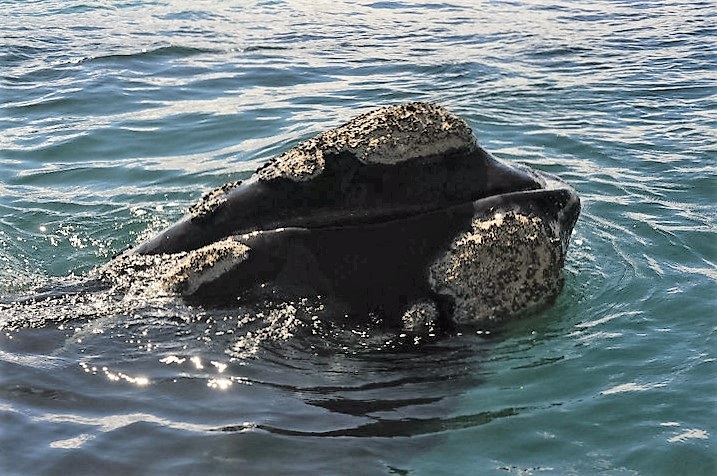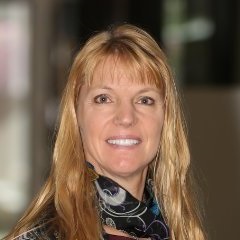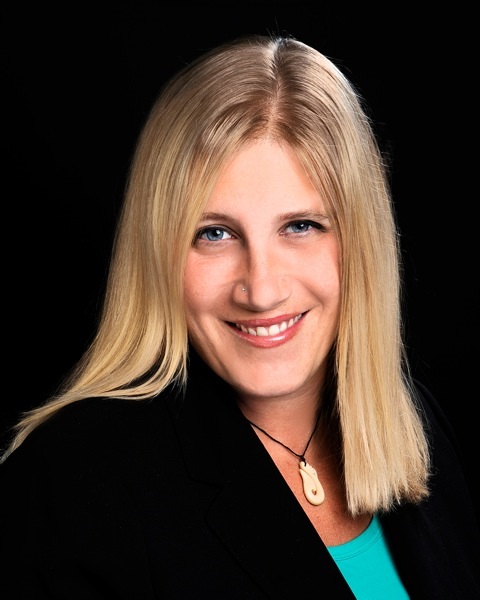It's Not Easy Being Green
It’s Not Easy Being Green
Minimizing the impact of offshore wind on wildlife
 The offshore wind industry in the United States is still relatively http://new. Many obvious challenges face the industry, including supply chains and power agreements. Another less-obvious challenge is requisite wildlife permitting and mitigation. Because part of the appeal of wind energy is that wind is "green," it is important for offshore wind to minimize its impacts on wildlife. However, as Kermit the Frog once lamented, "It's not easy being green."
The offshore wind industry in the United States is still relatively http://new. Many obvious challenges face the industry, including supply chains and power agreements. Another less-obvious challenge is requisite wildlife permitting and mitigation. Because part of the appeal of wind energy is that wind is "green," it is important for offshore wind to minimize its impacts on wildlife. However, as Kermit the Frog once lamented, "It's not easy being green."
The regulatory framework for offshore wind permitting in the U.S. is complex, involving an alphabet soup of agencies and laws. For wildlife permitting, the main laws are the National Environmental Policy Act (NEPA), Marine Mammal Protection Act (MMPA), Endangered Species Act (ESA), Coastal Zone Management Act (CZMA), Magnuson-Stevens Fisheries Act (MSA), and National Marine Sanctuaries Act (NMSA). The National Oceanic and Atmospheric Administration (NOAA) is responsible for the implementation of these Acts. Each Act is administered by different offices within NOAA, which sometimes operate more independently than is ideal. The Bureau of Ocean Energy Management (BOEM) is responsible for permitting energy exploration and development in marine regions and must consult with NOAA and meet the requirements of NEPA. Overall, the main permits required for offshore wind development involve BOEM permits and Incidental Harassment Authorization (IHA) under the MMPA.
The great thing about these laws is they are intended to balance development with wildlife conservation, a goal we all share. The drawback is there can be unintended consequences, poor application, litigation, inefficient consultation, and ineffective or cost-prohibitive mitigation. As such, it is important to consider wildlife issues early during planning of offshore wind development. Choices regarding technology, siting, and construction timing can have considerable impact on wildlife permitting and mitigation. In addition, being prepared for the amount of time it may take to complete permitting processes is important; it is not unusual to take between 6 and 12 months to obtain an IHA, which is valid only one year from issuance. It is important to use existing science to propose reasonable and effective mitigation and monitoring plans. Relying on agencies may be tempting, but an operator must know what makes sense for his/her site. This was important in a situation in which the agencies suggested a permit requiring shut-down of geophysical equipment whenever a marine mammal was within 500m of a survey vessel. Unfortunately, the survey was taking place in an area with a dense population of sea lions. Modeling suggested it was not necessary to use such a large exclusion area for sea lions, so in retrospect, 57 shut-downs could have potentially been avoided.
New acoustic guidelines proposed by NOAA are expected to be finalized soon. These guidelines codify the received sound levels expected to result in potential injury to marine mammals and may have substantial impact on the size of shut-down zones. They also include a dual metric for evaluation, peak received level and cumulative sound level, which will increase the complexity of modeling and shut-down zones. However, the guidelines will not affect the current policy of a 160 dB (rms) re 1μPa received sound level used as the threshold for evaluating acoustic behavioral harassment of marine mammals.
We have the opportunity to learn from the offshore oil & gas and European offshore wind industries, but there are some wildlife challenges unique to U.S. offshore wind. The industry should consider using platforms like the American Wind Energy Association (AWEA) to collaborate and create a collective voice regarding wildlife. It is to the industry's benefit to consider wildlife issues jointly and not submit highly disparate analyses and models in permit applications. However, site-specific and equipment-specific issues may call for some differences. Experience gained through permitting seismic work in the U.S. Atlantic (permits still pending two years later) shows lack of coordination creates confusion for the agencies, public, and advocacy groups who may ultimately litigate.
Lessons learned include:
- Begin permit planning early;
- Make appropriate use of existing data;
- Apply for permits appropriate to site conditions;
- Thoroughly evaluate mitigation/monitoring options;
- Recognize the importance of situational learning.
In addition, it is important to consider the harassment estimation process for marine mammals. The MMPA requires that NOAA be able to make "negligible impact" and "small numbers" findings. Because data regarding marine mammals are often poor and most models include broad assumptions, there is a tendency to be conservative in estimations. This supposedly assures not exceeding the allotted "take" and having to stop a project, but ultimately, depending on project scale, it can make it difficult for NOAA to support the necessary findings.
Some suggestions
- Model to reflect uncertainty and evaluate probability within a risk assessment framework;
- Empirically test models against monitoring;
- Improve technologies to reduce sound;
- Use simple models.
Data collected should be shared and published, so the information collected will be the best available science on which to base future assessments and mitigations. Evaluate different mitigations and adapt proposals to support the most effective and cost-efficient approaches. Much of the data on marine mammals in the U.S. is either very large scale or estimated by proxy. This means data collected during projects will better reflect the specific project area and be helpful to the whole industry.
The offshore wind industry in the U.S. has hurdles to overcome with respect to existing and pending wildlife regulations, but these regulations are designed to protect valuable marine resources and ecosystems. It is imperative to consider wildlife issues in early planning, use the lessons learned from other offshore industries, collaborate and speak with a united voice, use and share data, and work together with advocacy groups, agencies, and the public. An effort to do what is right will be valuable because the public wants to support "green" energy. Doing what is right is not necessarily at odds with cost-efficiency or competitiveness if it is approached practically and knowledgeably.
 Dr. Sarah Courbis is principal scientist and regulatory specialist at Smultea Sciences. Smultea Sciences is an environmental consulting firm collaborating with EPI Group to support geotechnical, geophysical, regulatory, and mitigation needs for offshore wind projects. Dr. Courbis received her master's in Biology (Behavior & Physiology) from San Francisco State University and her doctorate in Biology (Ecology & Evolution) from Portland State University. She is a member of the AWEA Offshore and Siting & Environmental Compliance committees.
Dr. Sarah Courbis is principal scientist and regulatory specialist at Smultea Sciences. Smultea Sciences is an environmental consulting firm collaborating with EPI Group to support geotechnical, geophysical, regulatory, and mitigation needs for offshore wind projects. Dr. Courbis received her master's in Biology (Behavior & Physiology) from San Francisco State University and her doctorate in Biology (Ecology & Evolution) from Portland State University. She is a member of the AWEA Offshore and Siting & Environmental Compliance committees.
 Dr. Mari Smultea is the founder and CEO/chief scientist at Smultea Sciences. Dr. Smultea received her master's in Wildlife & Fisheries Sciences and her doctorate in Marine Biology from Texas A&M University. She has >30 yrs of experience in permitting, assessing and mitigating impacts of anthropogenic activity on wildlife and their habitats around the world.
Dr. Mari Smultea is the founder and CEO/chief scientist at Smultea Sciences. Dr. Smultea received her master's in Wildlife & Fisheries Sciences and her doctorate in Marine Biology from Texas A&M University. She has >30 yrs of experience in permitting, assessing and mitigating impacts of anthropogenic activity on wildlife and their habitats around the world.
 Heidi Cocca is environmental manager at EPI Group. EPI is an energy consulting firm collaborating with Smultea Sciences to support geotechnical, geophysical, regulatory, and mitigation needs for offshore wind projects. Ms. Cocca received her master's in Biology (Marine focused) from Old Dominion University and is fully trained in protected species observation and passive acoustic monitoring for both JNCC and BOEM. She is a member of the AWEA Offshore and Siting & Environmental Compliance committees.
Heidi Cocca is environmental manager at EPI Group. EPI is an energy consulting firm collaborating with Smultea Sciences to support geotechnical, geophysical, regulatory, and mitigation needs for offshore wind projects. Ms. Cocca received her master's in Biology (Marine focused) from Old Dominion University and is fully trained in protected species observation and passive acoustic monitoring for both JNCC and BOEM. She is a member of the AWEA Offshore and Siting & Environmental Compliance committees.
Smultea Sciences | www.smulteasciences.com
EPI Group | www.epi.co.uk
Volume: 2016 September/October









